Transform your garden into a unique haven with inspiring pond landscaping ideas. Adding a pond introduces aesthetic appeal and vibrant pond life to your outdoor space. The design of your water feature can be a perfect match to your garden’s overall theme, whether you envision a small pond nestled in lush greenery or a formal pond complementing modern gardens.
Choosing the right pond plants is essential in creating a balanced ecosystem. Marginal plants like reeds and aquatic plants such as water lilies can transform your pond into a wildlife-friendly oasis. These choices not only enhance the beauty of your pond but also support wildlife, making it a lively focal point in your garden.
For those worried about safety, consider a raised pond. These designs not only look sophisticated but also help prevent accidents by keeping the water level at a non-accessible height. With thoughtful pond design, you can enjoy the soothing sound of flowing water whilst maintaining peace of mind in your garden.
Planning Your Pond Landscape

Creating a pond landscape involves careful planning of space and selection of the right pond size and shape. These decisions significantly impact both the aesthetic and practical outcome of your pond.
Assessing Space and Positioning
Consider your garden’s layout and available space for a backyard pond. Look for a sunny spot, as this encourages the growth of aquatic plants like water lilies and marginal plants. Avoid areas near overhanging trees to reduce leaf litter clean-up.
Think about how the pond will fit with existing garden design elements. It should blend seamlessly with your outdoor space.
Ensure it’s visible from your home, creating a focal point. Opt for a location where you can sit nearby to enjoy the soothing sound of flowing water.
Site accessibility is key. You need easy access for maintenance and adding or removing plants or fish. A formal pond near a paved area allows for straightforward upkeep. Safety is another factor. Consider fencing or raised edges to prevent accidental falls, particularly in gardens shared with children or pets.
Choosing the Right Pond Size and Shape
The size and shape of your pond will directly affect its maintenance needs and ecological balance. Smaller ponds often require less work but can support fewer plants and fish.
Raised ponds add character and make maintenance tasks more manageable. They also deter small creatures and pets from disturbing your pond life.
A natural swimming pond design with irregular shapes blends well with wildlife-friendly gardens. On the other hand, formal ponds typically have geometric shapes, making them suited for modern gardens.
The depth of your pond matters. Shallow areas can support bog plants, while deeper regions sustain species like koi.
This pond design choice influences its ability to support a variety of wildlife and plants, thereby enriching your garden ecosystem. Consider using a pond liner to maintain water levels and create a durable foundation.
Incorporating Water Features
Pond landscaping can greatly benefit from the addition of water features like waterfalls and fountains. These elements enhance both the visual and auditory appeal of the garden, making it a calming retreat. Here are ways to incorporate these features effectively.
1. Adding a Waterfall or Fountain

Waterfalls bring a dynamic feel to any garden pond. They create continuous movement, keeping the water oxygenated and attracting various wildlife.
When installing a waterfall, consider the height and the sound level. A mini pond might benefit from a gentle cascade, while a larger pond can accommodate a more dramatic fall.
Fountains are another popular choice, available in different styles ranging from traditional to modern designs. They also help circulate water, preventing stagnation and reducing algae growth.
2. Using Ponds as Centrepieces
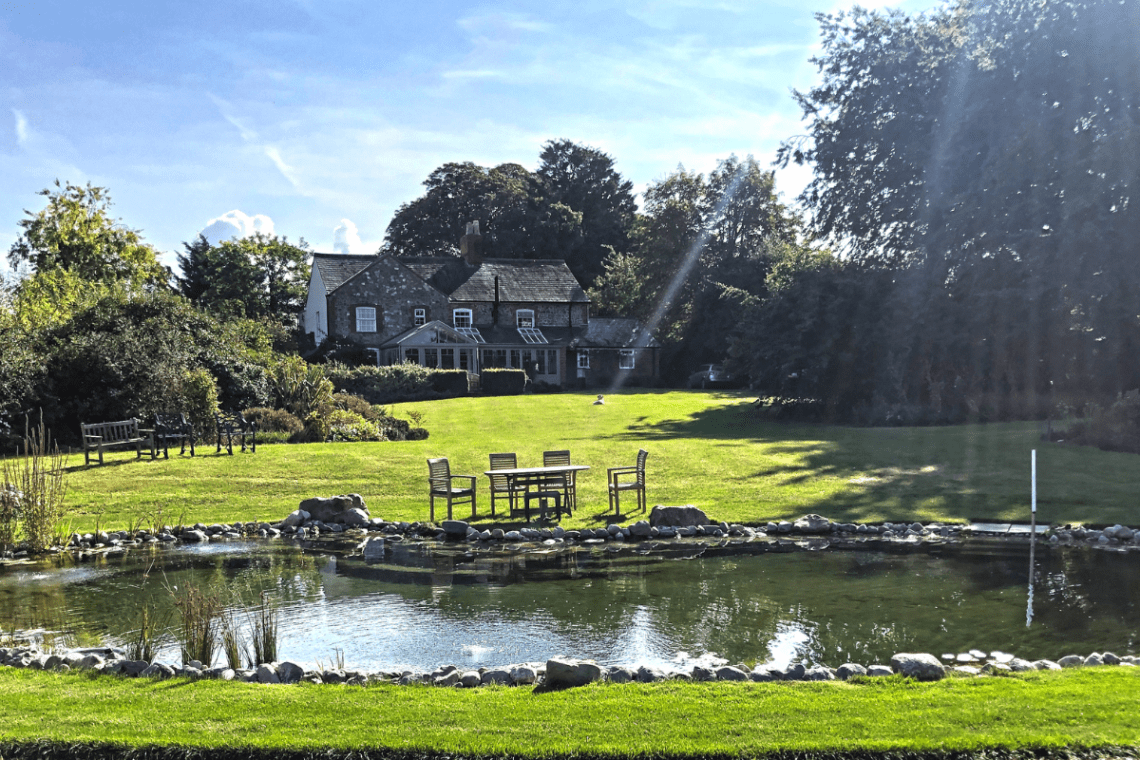
A pond can serve as the centrepiece of your outdoor space. By placing it in a central location, you can design seating areas around it, allowing you to enjoy the tranquil view. Enhancing a pond with features like a water wheel or a small waterfall can draw attention and create a harmonious focal point.
Make sure the pond edge is safe and blends well with your garden design. Choosing aquatic plants like water lilies or ornamental grasses can add pops of colour and texture, further highlighting your pond.
Selecting Aquatic Plants
Choosing the right aquatic plants can enhance the look of your pond and help maintain its health. It’s useful to focus on creating a balanced ecosystem and strategic plant placement for both function and beauty.
3. Creating a Balanced Ecosystem

A mix of pond plants helps keep pond water clean and supplies oxygen. Floating plants, like water lilies, cover the water surface, reducing algae growth and providing shade, which helps control pond temperature.
Marginal plants, such as flowering rush and ornamental grasses, thrive at the pond edge, serving as hiding spots for small creatures. Submerged plants are vital in maintaining oxygen levels and breaking down pond waste, supporting a diverse range of pond life.
Consider plants that are local to your area. Native plants are adapted to local conditions and usually need less maintenance. They also support local wildlife. A balanced selection ensures that all layers of the pond are utilised, from bottom-dwelling plants to those that float on top.
Top Tip: The depth of your garden pond depends on what you want to have in the pond. Koi ponds need deeper space and small wildlife ponds only need a few square metres.
4. Plant Placement Strategies

Each type of plant has its ideal place in the pond landscape. For instance, place taller marginal plants at the pond edge to create a natural transition between water and land. Floating plants should be distributed across the pond surface to provide even shade and aesthetic appeal, while submerged plants are best placed in shallow areas to supply oxygen effectively.
When placing your plants, ensure that each type receives the right amount of sunlight. Shade-loving plants should be placed under overhanging trees or along the pond edge, while sun-loving plants like water lilies need full sun to thrive. By thoughtfully positioning your plants, you can create a visually pleasing and healthy pond.
Fish and Wildlife Considerations
When planning a garden pond, you should think about both fish and local wildlife. This includes selecting suitable pond fish and creating an environment to invite local wildlife like birds and insects.
5. Introducing Pond Fish
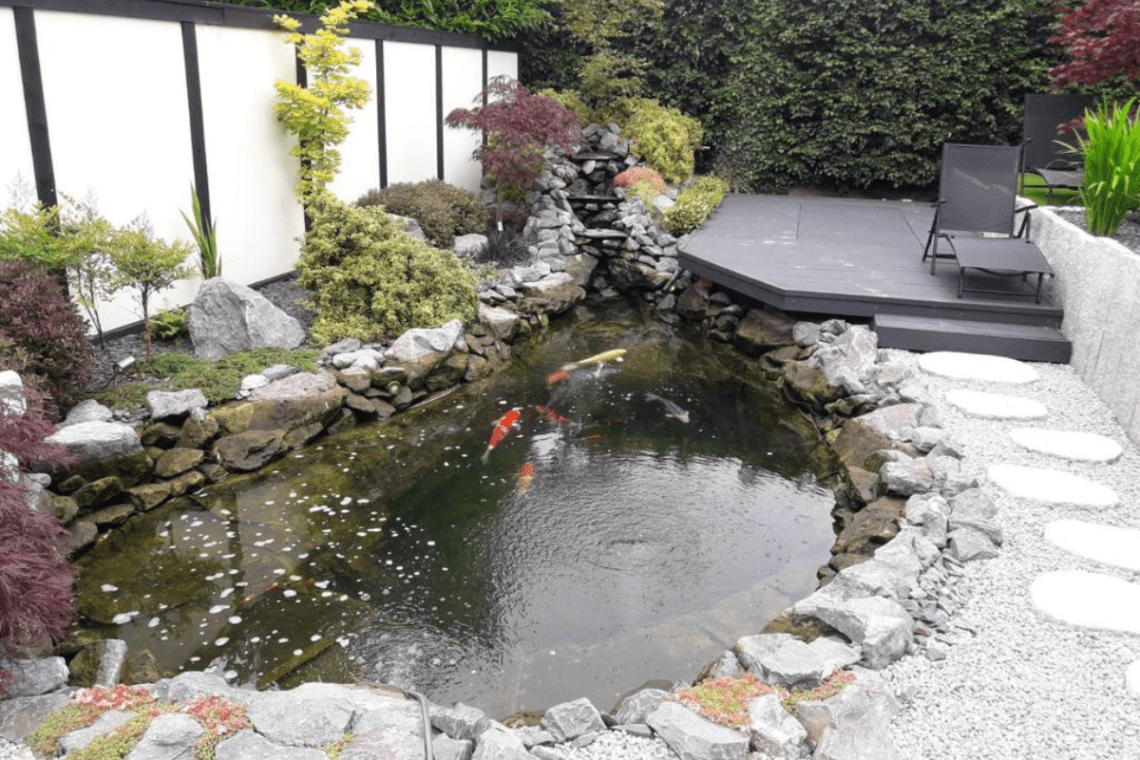
Choosing the right fish for your pond is vital. Koi are a popular choice for their beauty, but they need deeper ponds, about 3 feet, to thrive in cold weather. If a smaller pond is preferred, consider goldfish, which are hardy and vibrant but require less space.
Keep in mind that pond fish contribute to a balanced ecosystem. They help control algae, a common issue, by consuming it as part of their diet. It’s important to manage the pond environment to prevent overcrowding, which can affect both fish health and the pond’s water quality.
6. Attracting Local Wildlife
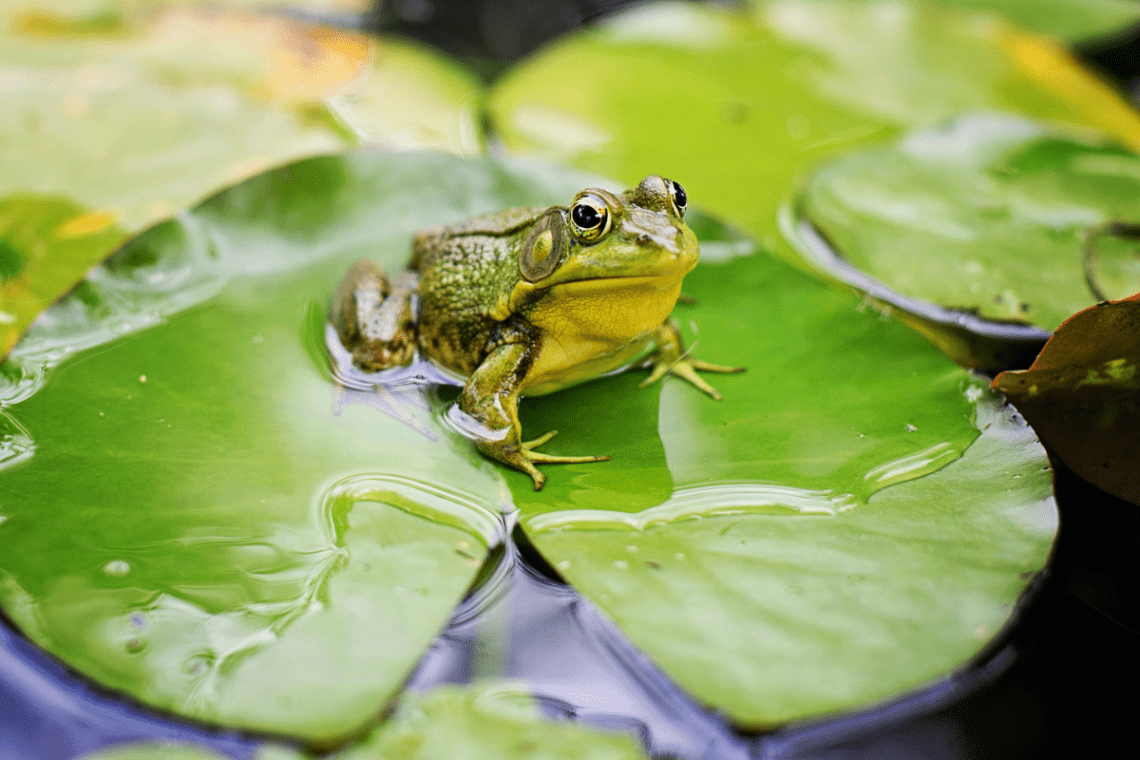
To make your pond attractive to local wildlife, you should design it with varying depths, including shallow pond areas for smaller creatures like frogs. Plant a mix of marginal plants, such as reeds and water lilies, which provide shelter and breeding sites.
Overhanging trees can offer shade but watch for debris in the water. A water feature like a small waterfall or fountain can keep the water oxygenated, creating a healthier environment for both fish and wildlife. By designing a wildlife pond, you create a space beneficial for both aquatic life and local animals, enhancing the biodiversity of your garden.
Enhancing Aesthetics and Functionality
When thinking about garden pond ideas for your home, it’s important to focus on both beauty and practicality. A well-thought-out design can highlight natural features, while accessibility elements ensure everyone can enjoy the pond.
7. Using Innovative Design Elements

Incorporate unique features like stepping stones or a small pond bridge to give your pond an elegant touch. Bridges aren’t just for looks; they invite you to view the pond from different angles. Japanese-style bridges are great for creating a tranquil, calming space.
A waterfall creates a soothing sound and helps aerate the pond water, keeping it healthy. Ensure your pond design includes varying depths for different plants and creatures, making it both visually appealing and supportive of diverse pond life.
8. Incorporating Functional Additions for Accessibility

Consider adding paved areas or clear paths around the pond to improve access. This makes the pond more inclusive and safer, especially in wet conditions. A strategically placed seating area allows for relaxation and enjoyment of the pond’s scenery.
For safety, particularly if children visit, install low barriers or edging around the pond to prevent accidental falls. A container pond on a patio offers a shorter step for those with mobility challenges, and they’re easy to maintain.
9. Using Lighting to Illuminate Your Pond

Lighting is another functional feature that enhances accessibility. Lights around a pond not only highlight its beauty in the evening but also improve safety after dark. Use solar lights for an eco-friendly option that blends well with garden surroundings.
10. Adding Paving Around Ponds
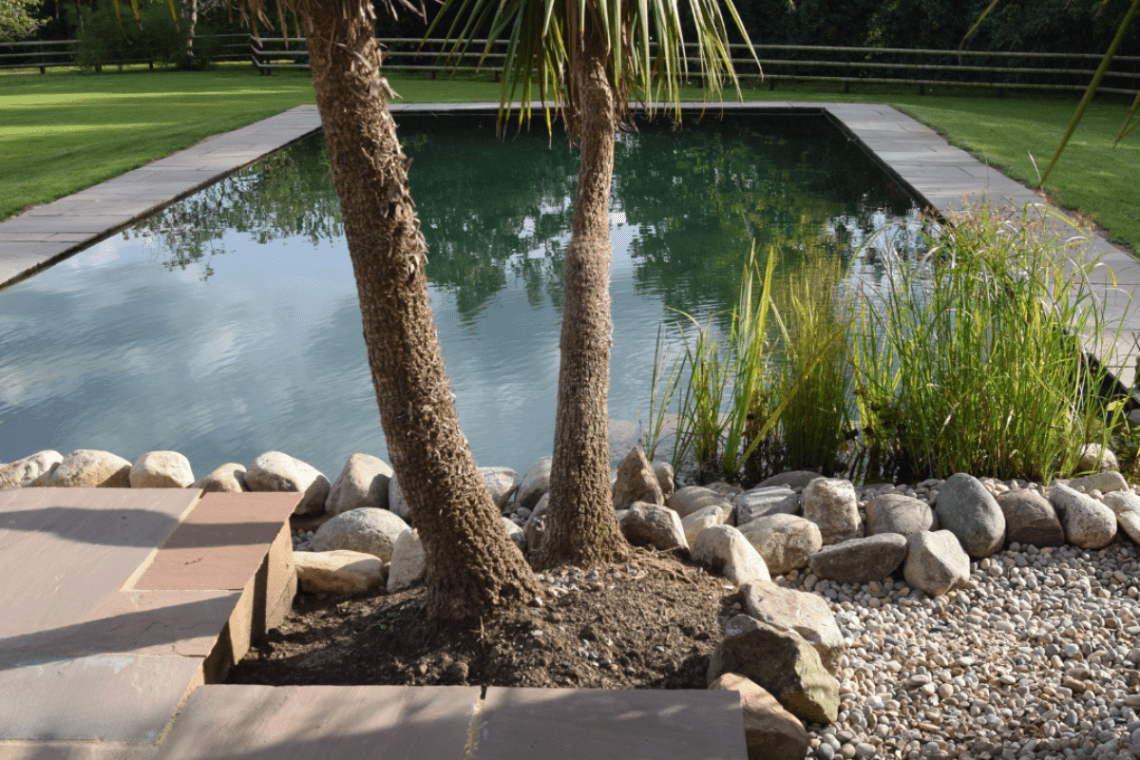
Garden ponds can fit in well in your outdoor space, especially if you add paving around your pond. Paved areas can be crafted using gravel, concrete, or bricks, adding structure and preventing muddy paths. A well-paved path ensures easy access around the pond and minimises erosion during rainy seasons.
When placed strategically, paving creates a neat look and helps emphasise your pond as the focal point of the garden. Consider using stones or tiles with natural hues that blend with the environment for a unified design.
11. Building a Swimming Pond
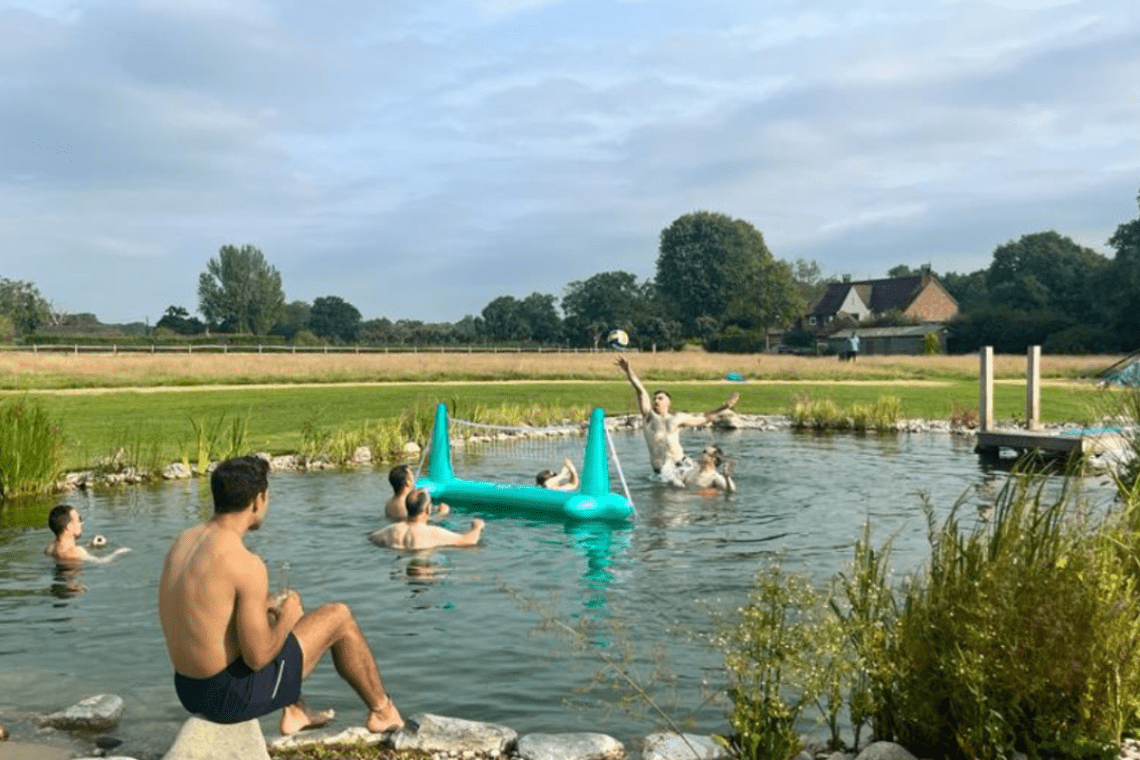
Swimming ponds bring luxury and functionality together in an eco-friendly way. Unlike traditional pools, these ponds incorporate natural processes for water purification through aquatic plants.
Installing a swimming pond starts with creating distinct zones for regeneration and swimming, ensuring the water remains clear and fresh. Choose marginal plants for the edges that aid in water filtration while adding beauty.
A well-designed swimming pond not only serves as a place for a dip but doubles as a stunning water feature, integrating seamlessly with your garden space. When planned properly, it promotes a diverse pond life while offering a unique swimming experience.
12. Matching Your Pond with Your Garden Space
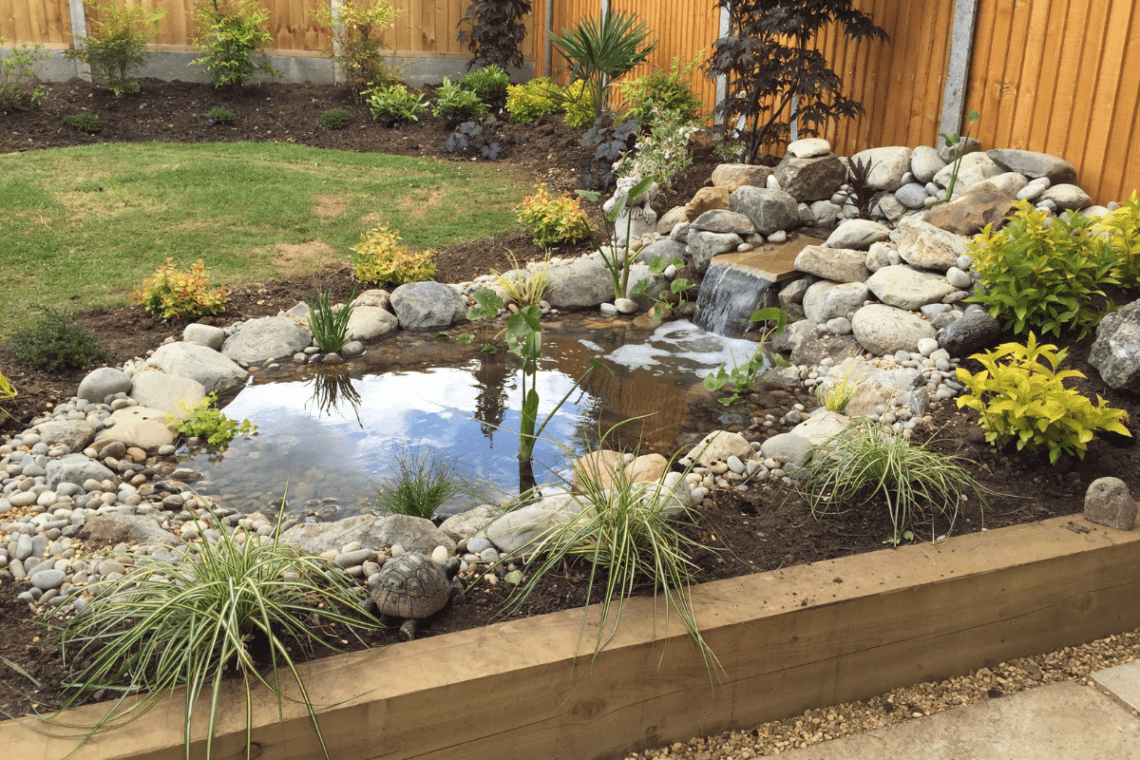
Any good garden designer will tell you to match your pond with how your garden space is designed. If you have a classic garden with hedges, regency-era ornaments and gazebos, then consider building a pond with water features or a single-tier water fountain.
Alternatively, for rustic gardens that blend into their surrounding landscapes, natural ponds can work well. They help to create that classic country garden feel, along with lots of local plants and wildlife.
If you’re into the idea of having a serene and calm space, adding a koi pond is a great idea. Other zen garden ideas you could include are lily pads, a Japanese-style bridge or a rusting stone paving.
Contact Us Today for More Pond Landscaping Ideas
Are you inspired by all these natural pond landscaping ideas? Our experts are ready to help you transform your outdoor space. Whether you dream of a raised pond with flowing water or a serene wildlife pond, we can guide you.
Interested in introducing vibrant aquatic plants like water lilies or ornamental grasses to your pond design? You might want a modern pond that supports wildlife yet fits seamlessly into your garden.
Whatever your vision, contact us at 0116 2403735 or yourjourneybegins@pondandgardendesign.co.uk for personalised ideas and advice. Let us help you create a pond that enhances your garden’s beauty.